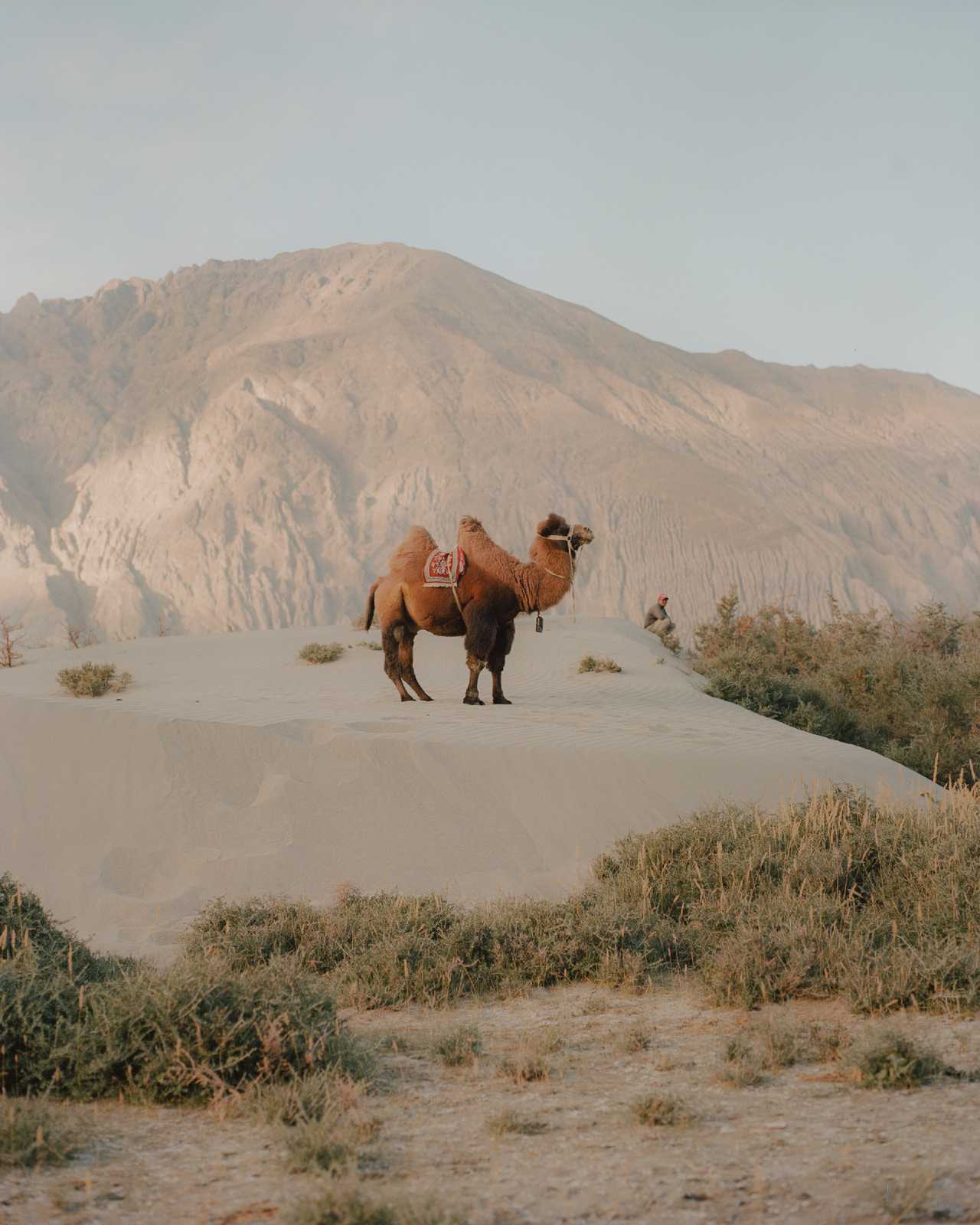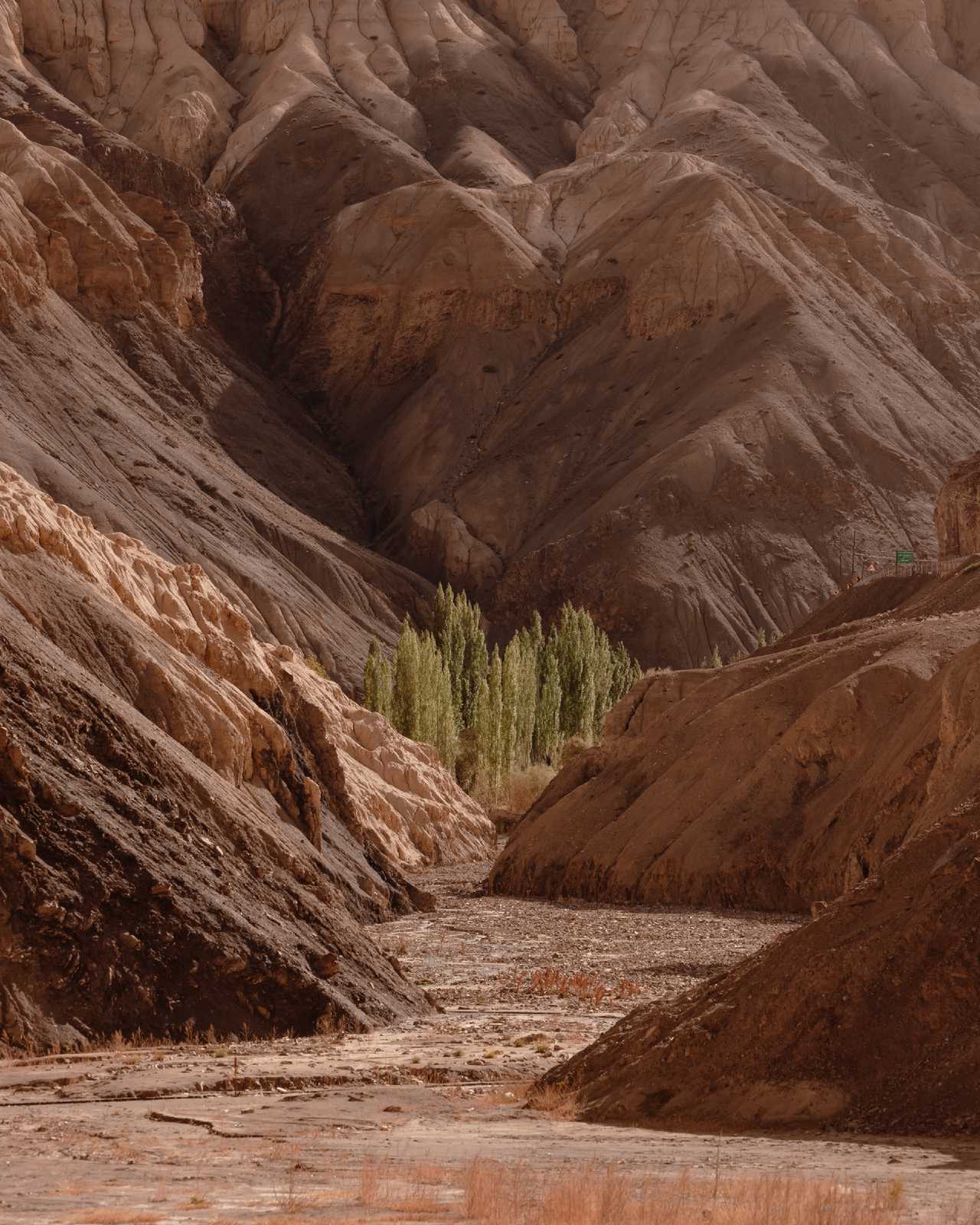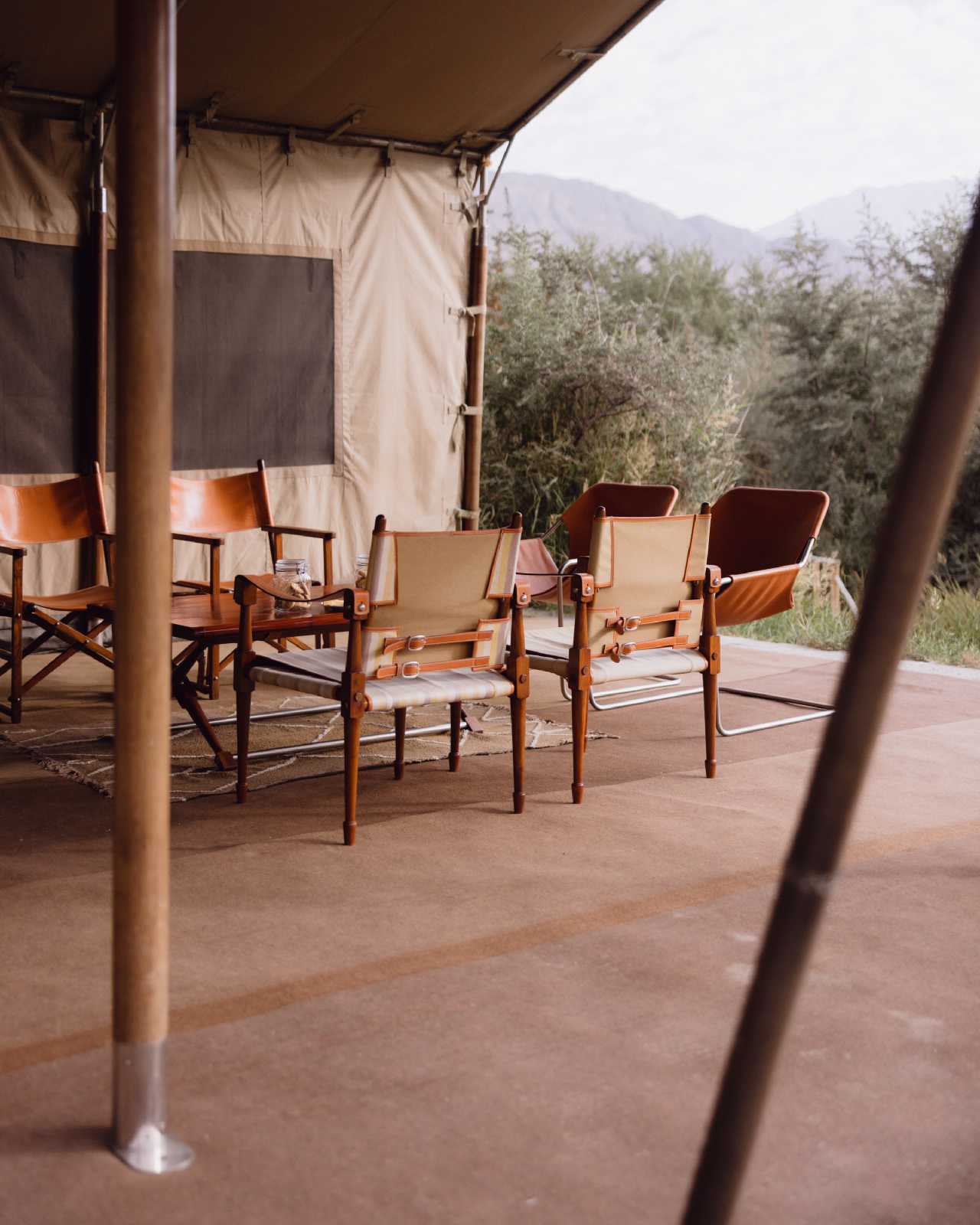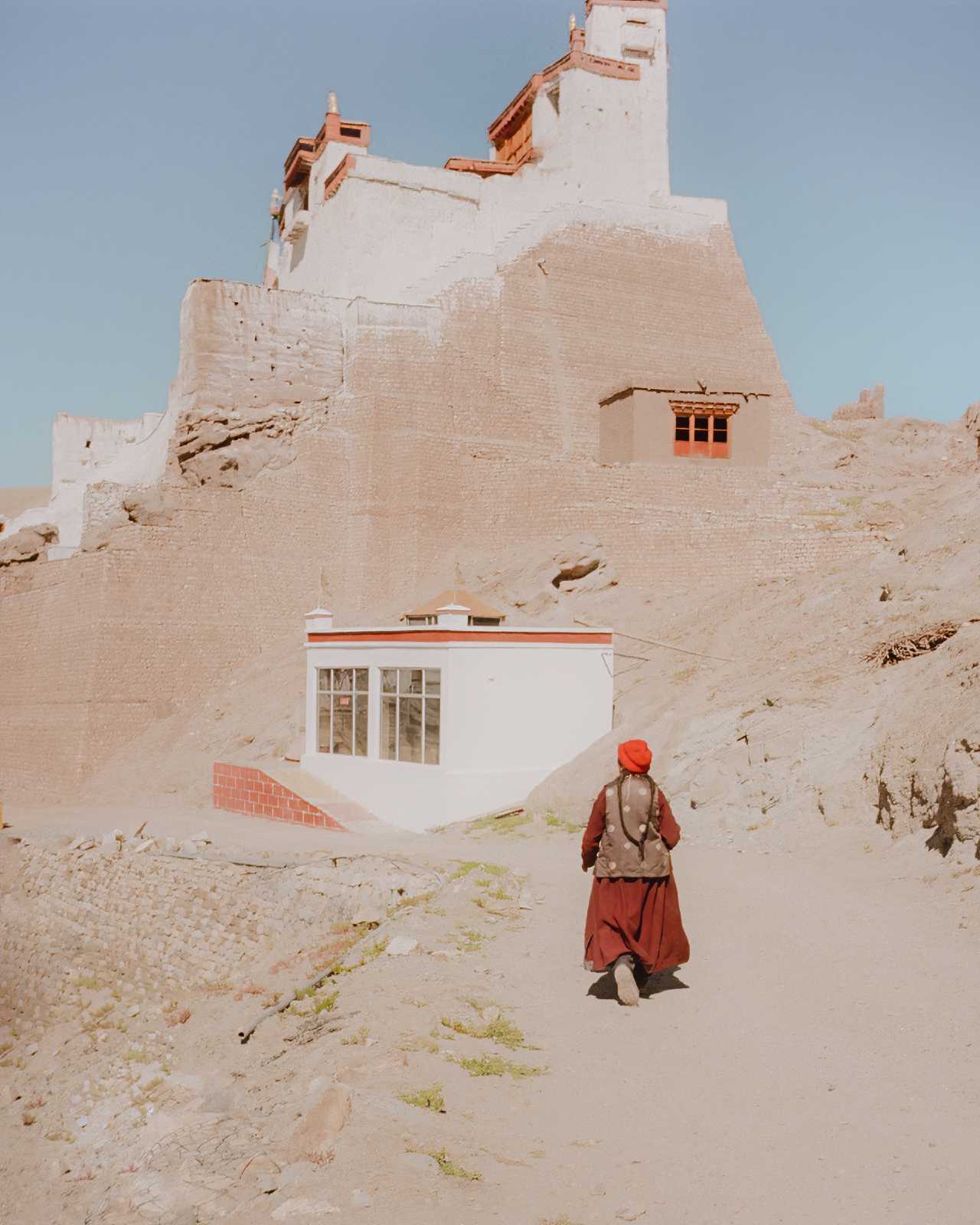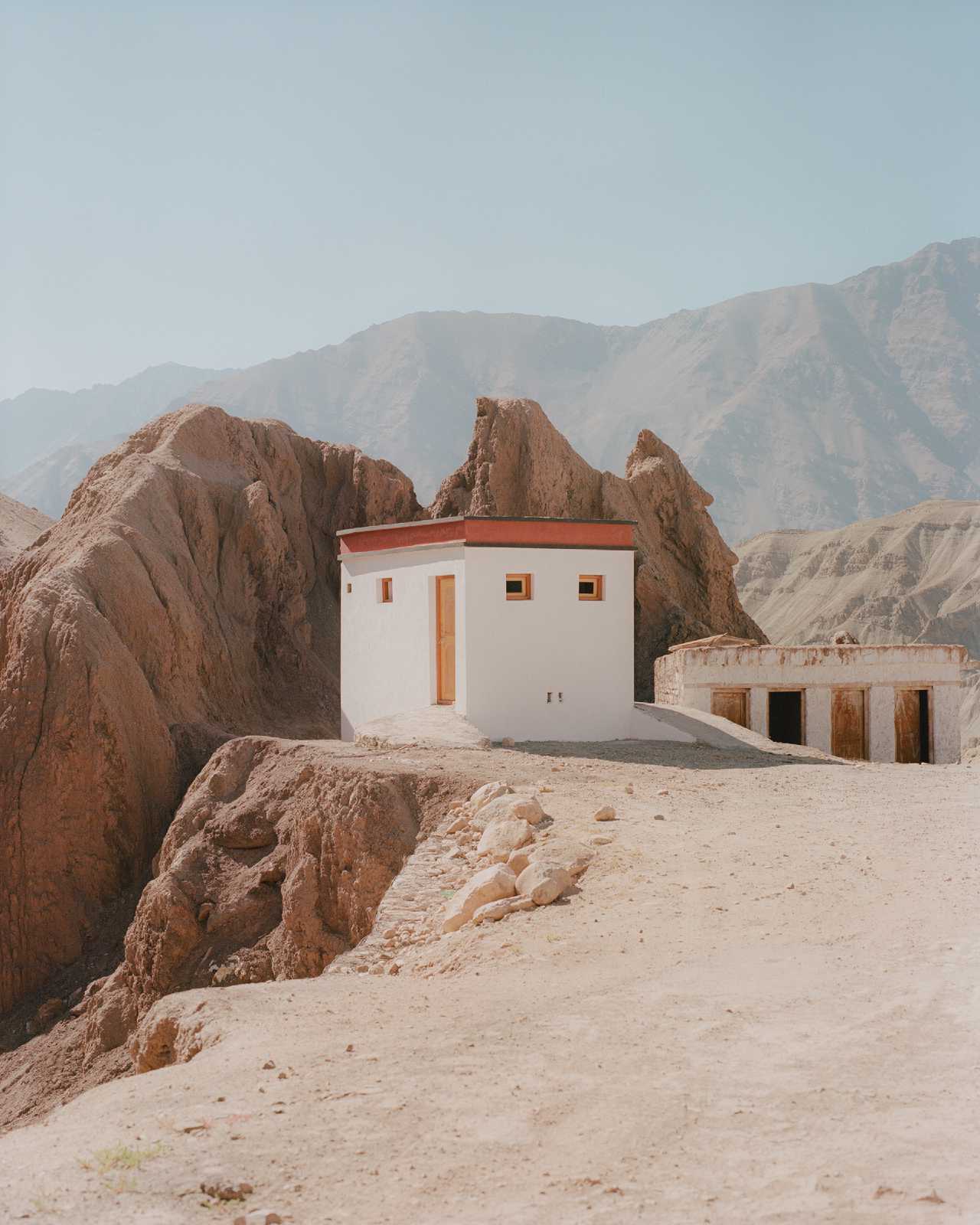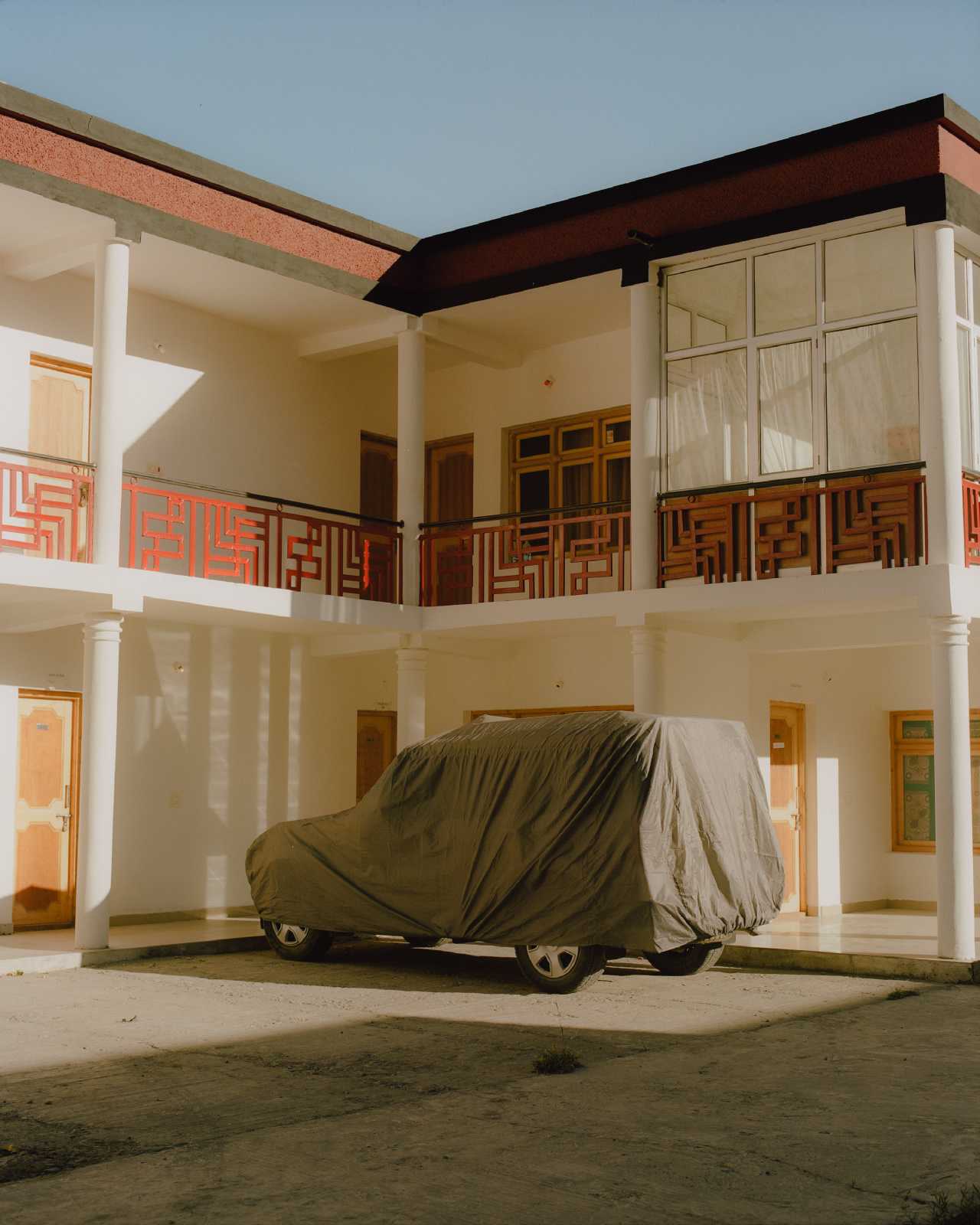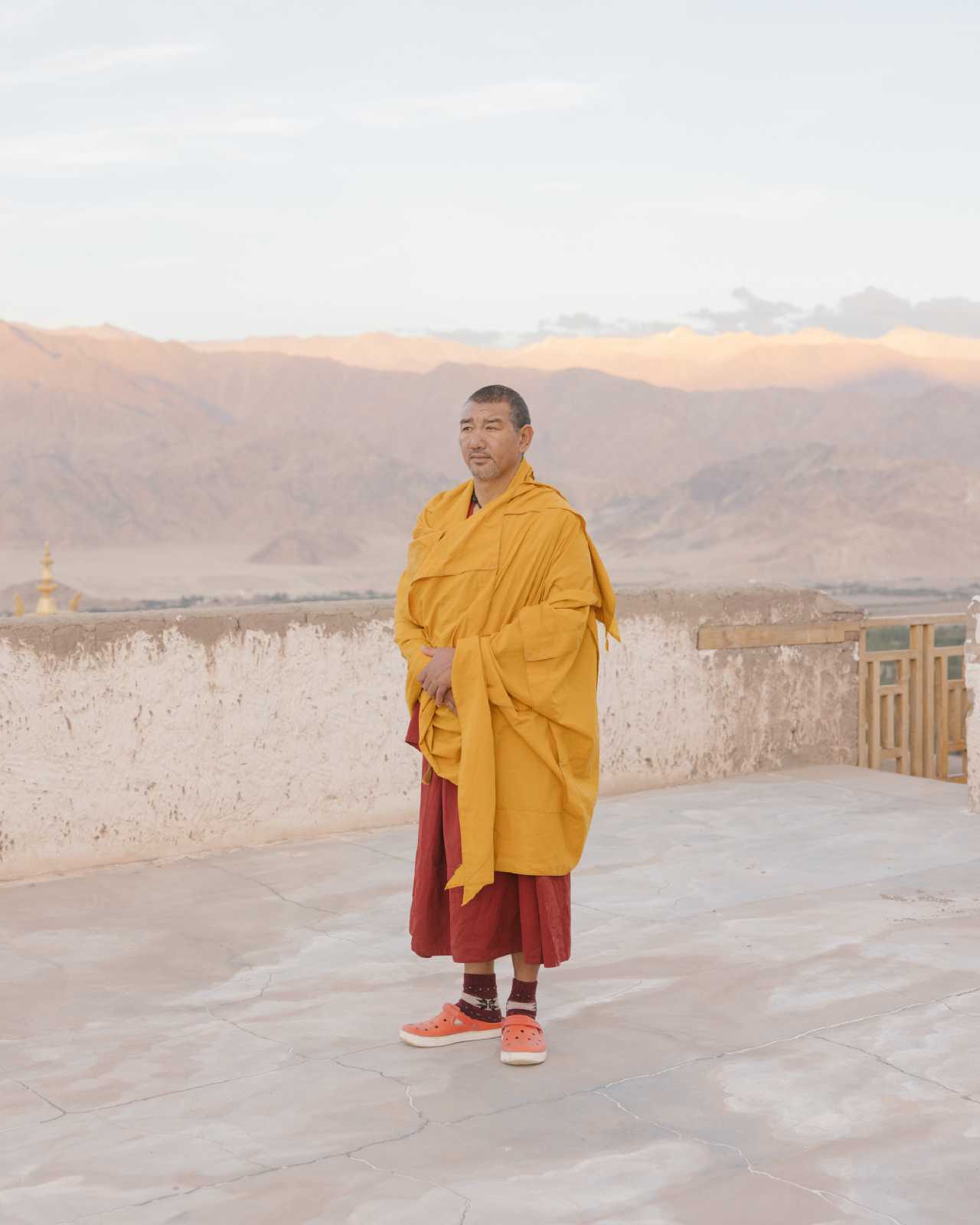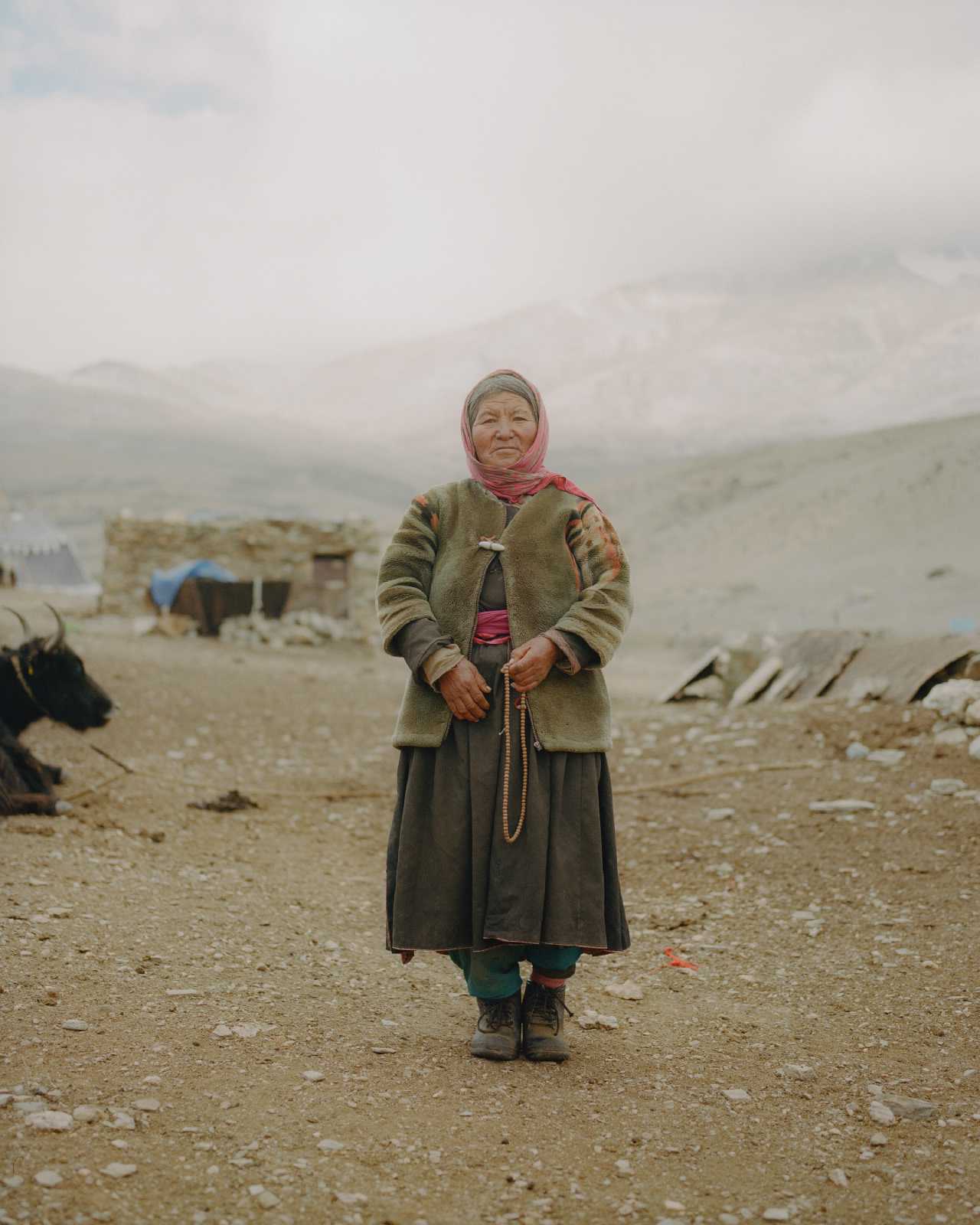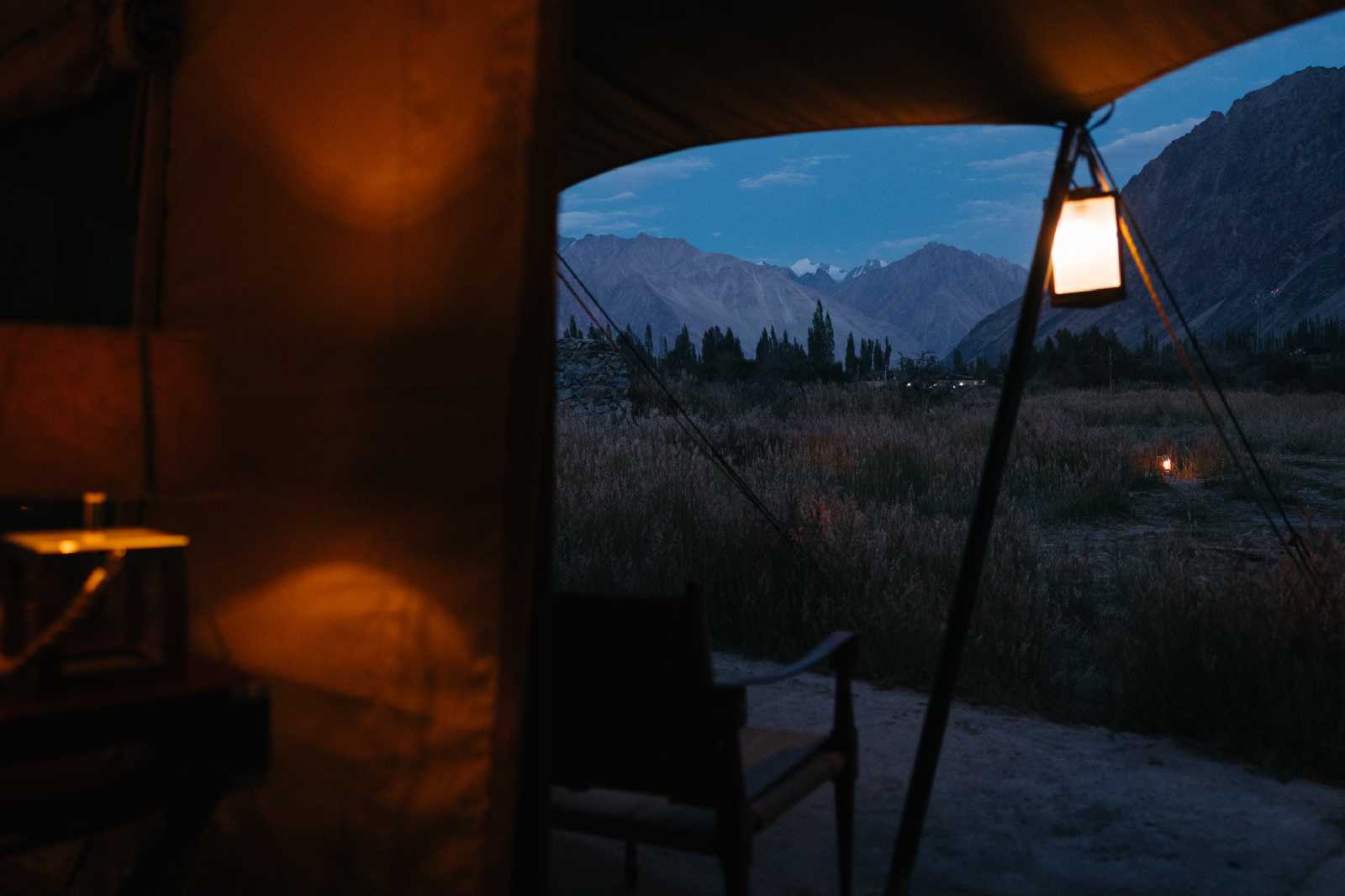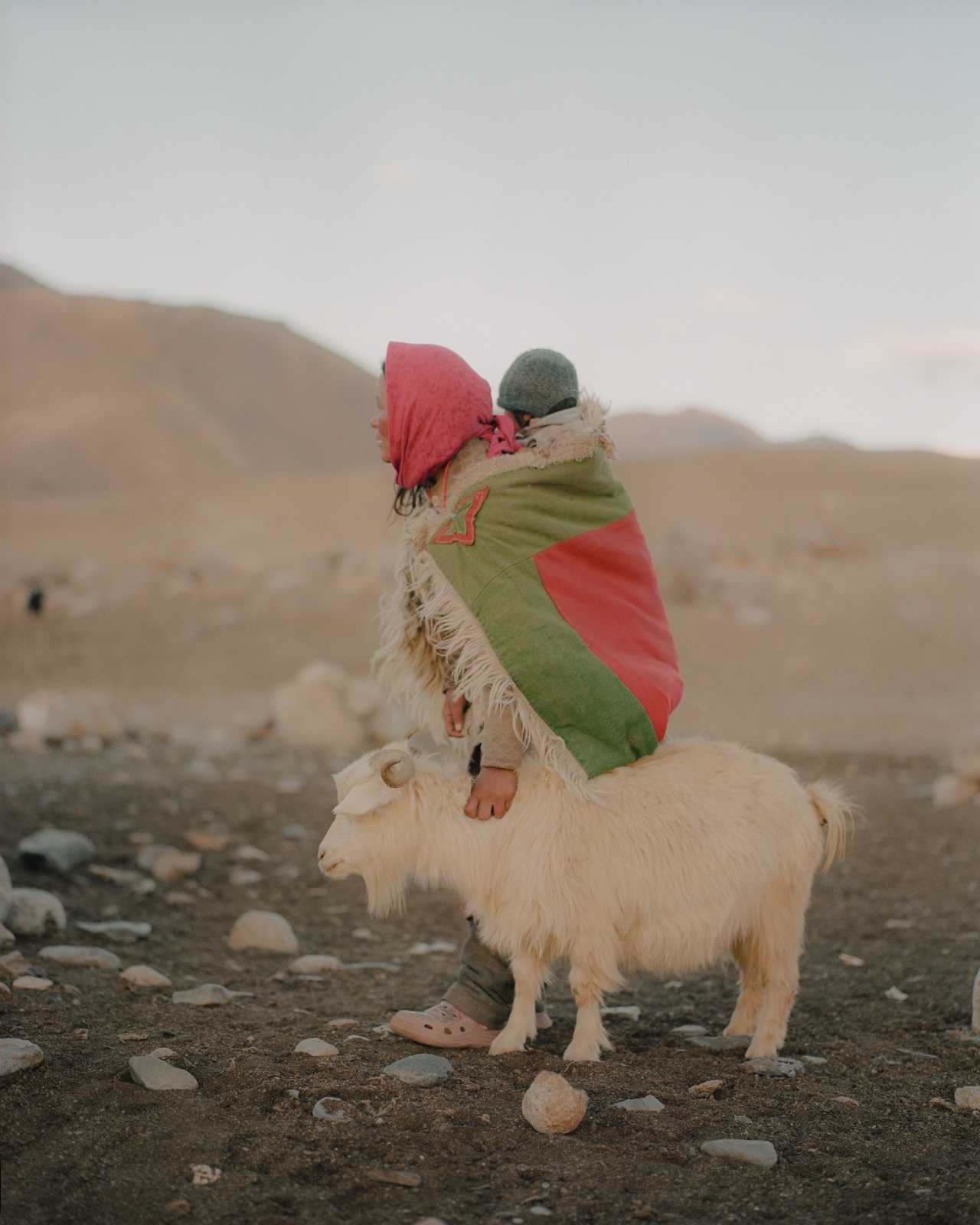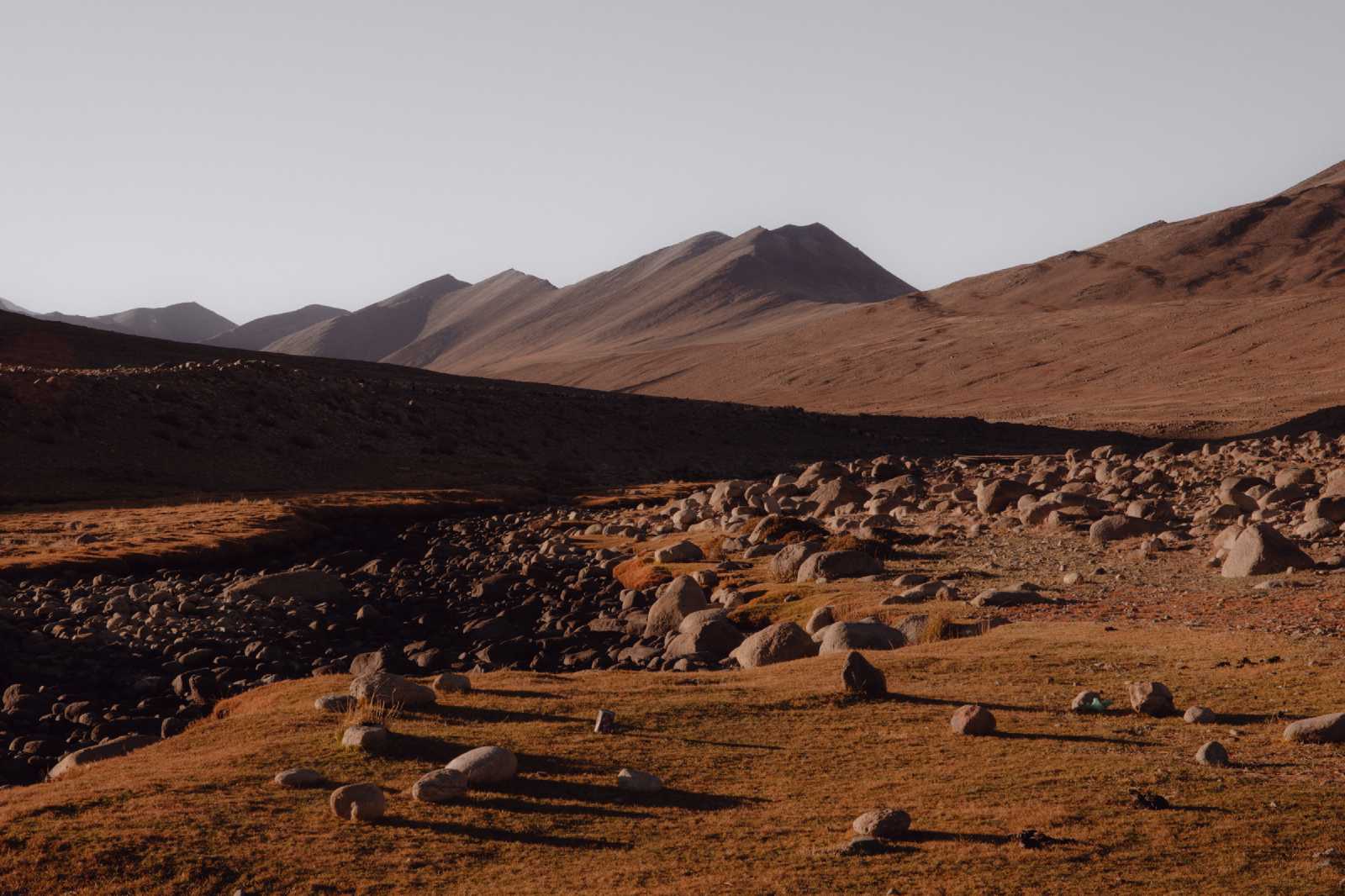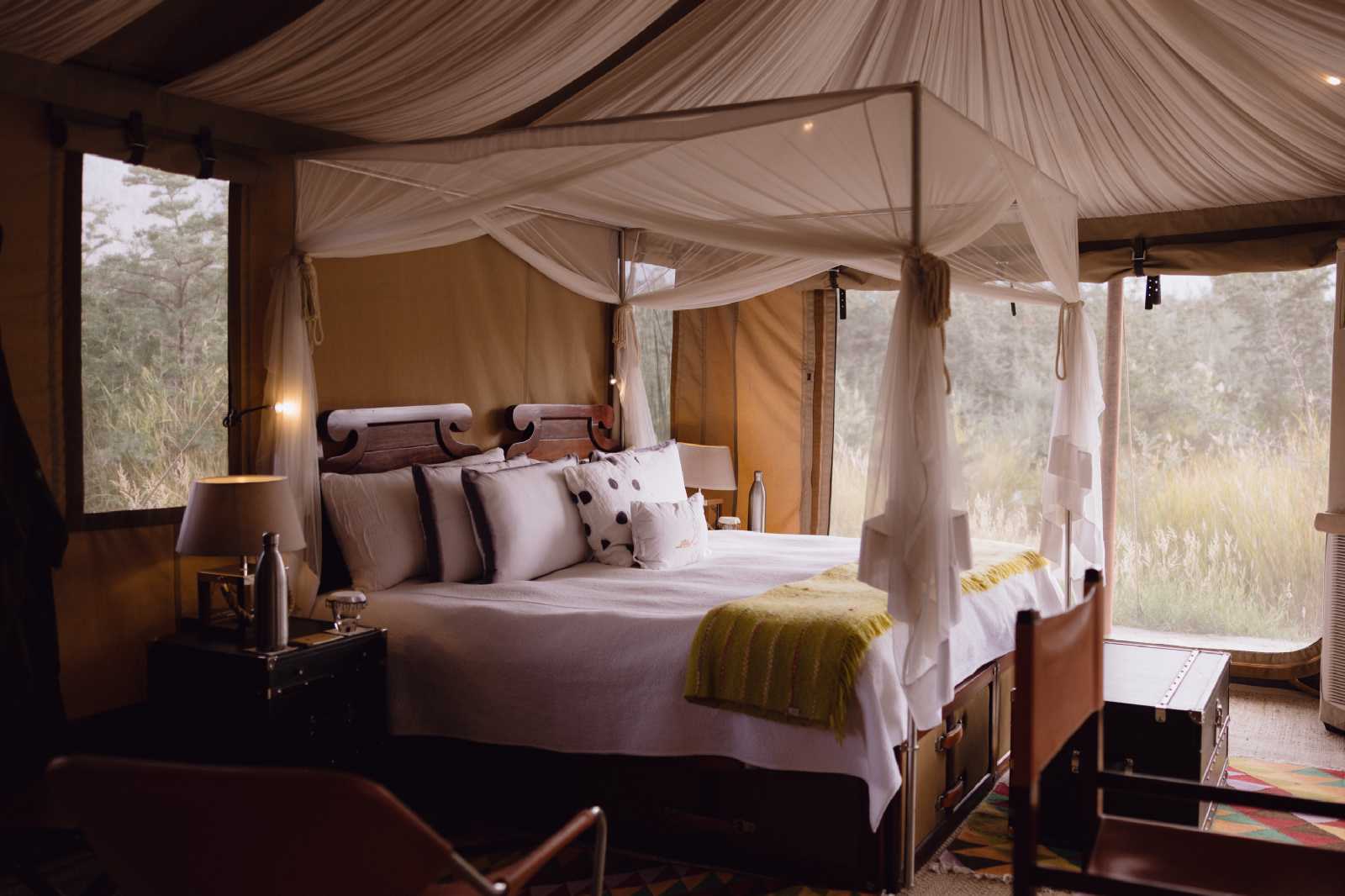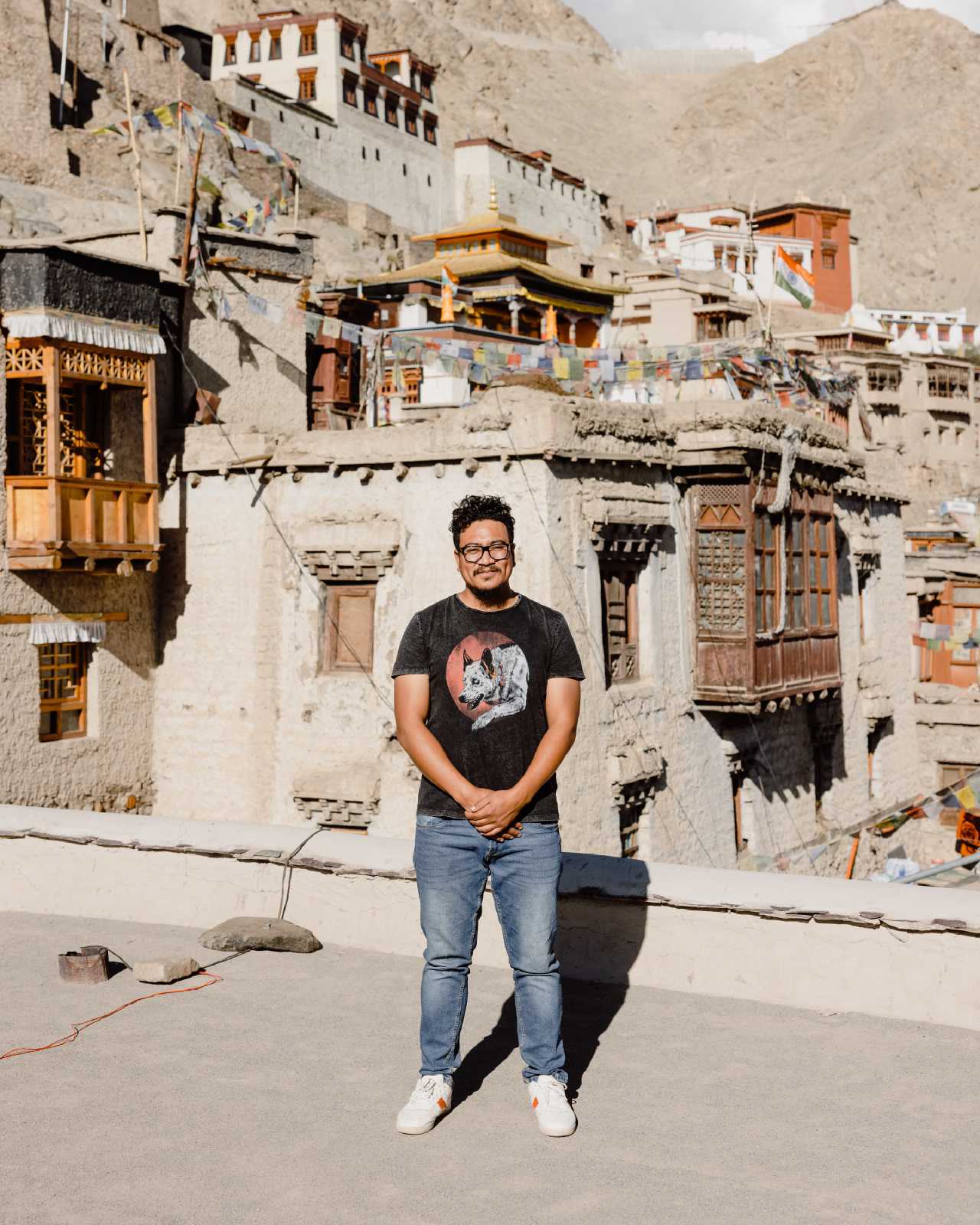Ladakh Expedition
May 16 - 27, 2025 | India | $9500
FILL IN BELOW LINK IF YOU WANT TO BE ADDED TO THE WAITING LIST SO WHEN A SEAT BECOMES AVAILABLE, YOU WILL BE NOTIFIED!
In the far and remote northwest corner of India, perched in between Pakistan and Tibet, lies a mythical and desolate high desert landscape dotted with Buddhist monasteries, tranquil lakes, nomadic herders, silk route heritage and friendly locals. Welcome to Ladakh, which derives its name from La-dvags, meaning ‘land of mountain passes’ in Tibetan, and for a good reason, since most of this trans Himalayan plateau lies at an altitude above 10.000 ft. This is where the local Ladakhi people live according to ancient traditions and customs, but for how much longer?
On this intimate photographic journey, we will travel back in time, deep into the heart of the Ladakh region to meet Buddhist monks, nomadic communities, villagers, but also a new generation of Ladakhi on their path to a more modern world.
Important information
- Dates: May 16 - 27, 2025
- Expedition starts/ends in: Delhi, India
- Type: Car based overland expedition
- Physical difficulty: Moderate
- Price: $ 9500 per person (based on twin sharing / double sharing accommodation)
- Deposit payment: 50% of $ 9500 to be paid upon booking (to hold your seat), 120 days prior to departure the remaining 50% will have to be paid
- No single supplement available
- Group size: Min 6, max 9 (fill in the link to be waitlisted)
- Experience level: Anyone is welcome, from beginners to professionals
- Above price is incl VAT
- Make sure to read the Terms & Conditions before booking
- Read the full day-to-day itinerary by scrolling down
Here’s an image of one of 2024 goups, Class of May ‘24.
For more than a decade I have been traveling to India. After more than 40 individual assignments on the Indian subcontinent, I made my first appearance in Ladakh in September 2022, and instantly fell in love with the landscapes, the culture, but most of all with the people and their spirit. In the months that followed I carefully crafted a unique itinerary that crosses the entire region, focusing on meaningful and genuine interactions with the Ladakhi people, learning about their lifestyle, culture and traditions and documenting it all with the incredible medium that is photography. Now, 3 years later, I have meanwhile guided 5 groups of participants on uniquely interesting expeditions to this special place.
However, this expedition is so much more than a photographic trip. It’s an opportunity to learn about one of the most beautiful ancient cultures in the world, Tibetan Buddhism as well as engage with a disappearing nomadic lifestyle that has been the cradle of humankind for millennia. A fully immersive journey to a truly unique destination that will steal your heart and leave you with memories that will last a lifetime.
The entire expedition is designed for the curious, open-minded traveler, who’s looking for a soul a touching experience. We will have exclusive and privileged access to elements of the Ladakhi culture that are usually off-guard for tourists. With daily opportunities for 1-on-1 in-field tuition and several mid-day lectures, Pie will guide you towards creating meaningful stories during this expedition. Of course, the expedition is designed for photographers, but don’t worry about your skill set or your equipment.
Because my expeditions are an extension of what I value in my work as an artist and story-teller, I carefully select the partners I work with, based on a few core variables. Next to the photographic potential, I am always looking for a unique and distinct hospitality angle. Accommodation that allows my guests to connect with the wilderness in a meaningful way without making compromises to comfort, as well as allowing them to experience the nostalgic charm of the olden days.
For this expedition I am collaborating with a selection of camps that excel in combining the romance of a nomadic lifestyle with the charms of life lived under canvas. An incredible blend of sophisticated luxury in untamed wilderness. Traveling in style, while connecting with the outdoors. During my first visit to Ladakh in September 2022, I experienced a truly magical energy & spirit when staying in these camps, and I’m sure you will feel the same!
Day-to-day itinerary
For a period of 12 days, we will travel through this unique trans Himalayan region under the guidance of my dear friend Namgyal, one of the best guides in the region. He and his team will take us on a journey at a slow pace that allows to create meaningful and thoughtful images of people, culture and landscape, while visiting Buddhist monasteries, nomadic settlements, countryside villages and some of the most mind-blowing landscapes you will encounter in your life. Here’s what you can expect.
Day 1: Arrival in Delhi
After everybody arrived at Delhi International Airport, we will gather on May 16 in the morning at the Leela Palace Delhi hotel. We will kick-off with a 3hr long introduction lecture on Visual Story-telling by Pie in one of the historical hotel board rooms. The afternoon we will be exploring the city, because what is a journey to India, without first diving into the Delhi city buzz? Together with a local tour guide, we will visit a few off-the-track photography highlights. We will end the day back in our hotel for dinner.
Day 2: Arrival in Leh
Early in the morning we get transferred to Delhi Airport, where we board our flight to Leh, the capital city of Union Territory of Ladakh. The flight in will be absolutely spectacular, flying over the Himalayan Mountain ranges, and landing at a staggering 10.680 ft above sea level. After arrival we will be picked up by Namgyal and his team and transferred to our first camp in Thiksey. Because we are sleeping at an altitude of 11.000ft we are taking it easy for the remainder of the day. It is very important at these altitudes that you acclimatize by resting on arrival.
You will be checked in to your amazing rooms and we have lunch together. The camp has many books about the region and there’s a courtyard with traditional games, you can also go for a short walk on the camp grounds to appreciate the mind-blowing mountain ranges around us. In the night we have dinner together and hit the bed for a long night of sleep.
Day 3: Meeting the people of Thiksey
After a leisurely breakfast, we start the day with a first photography lecture by Pie. We will chat about topics like photography ethics, how to introduce yourself when working with strangers, portrait photography, a full gear-walk-through, but also about light, composition, use of colour, and so on. Just to get you ready for the 10 days that are ahead of us. The rest of the morning we will rest to further acclimatize to the altitude.
In the afternoon we are heading out for tea at a local traditional Ladakhi village house where we will meet some villagers. We will chat to them about their lifestyle, their customs. There’s of course the option to photograph them in and around the house. Later in the afternoon we proceed with them into the fields along the Indus River and the Shey Stupas where we continue to document their lifestyle.
Day 4: Two paths to Nirvana
Early morning, long before sunrise, we get ready, to visit Thiksey Monastery to attend the morning puja (prayers). This is a touching and calming experience steeped in the tradition of the Gelugpa order of Tibetan Buddhism. The monastery started in 1630 and up until today features as one of Ladakh most scenic locations, towering high above the meandering Indus River. After the morning prayers, we will split the group in 2 and each group gets to spend some significant time with monks that inhabit the monastery. We will get an exclusive inside look into their homes on the monastery grounds and a unique insight into their lifestyle. There’s room for questions and of course for photography. You can also venture around the monastery yourself. We will head back to camp for Lunch and to rest.
In the afternoon we will visit a second monastery which will be either Hemis Monastery, Matho Monastery or Shey Monastery, all equally impressive. We will engage with monks once more in a private fashion and witness the sun go down wrapping the landscape in a golden blanket.
Day 5: Conquering the Moonland
Early in the morning, before breakfast, we drive to Alchi Monastery, one of the oldest monasteries in former Kingdom of Ladakh showcasing 11th century wall scriptures and paintings of Buddha’s life and teaching, exquisitely painted by Kashmiri artists on temple walls. On our way to Alchi, we will pass through the villages of Nimmu, Saspol, Basgo fort and Sangam, and we can stop anywhere we want for photography.
We will have lunch at Alchi Kitchen, the first ever Ladakhi restaurant serving freshly prepared Maa’s and Grandpa’s recipes (traditional Ladakhi food). But what’s even more incredible than the food, is the story behind this place, set-up by a lady who lost her parents, had to leave college, but came back and is now sharing Ladakh’s food with the world. We will spend some time with the beautiful ladies who run this place, and there’s time to photograph them.
After lunch we will continue our journey to Lamayuru Monastery, one of the most scenic monasteries in the world. It is also one of the largest and oldest monasteries in Ladakh, with a population of around 150 permanent monks. In the past it even had 400 monks, many of which are now based in gompas in surrounding villages. It’s an incredible place for sunset and we watch the last light fade away over the Ladakhi landscape before we make the long journey back to our camp in Thiksey.
Day 6: Discovering the Nubra Valley
On the morning of day 6, we have flagged some potential extra time in Thiksey Monastery for those who want to once again, attend the morning prayers in solitude and silence. Because Thiksey Monastery is such an incredible place to watch the sunrise, we highly recommend everyone to join! For those who rather explore some surrounding villages at first light or visit a local primary school, we are flexible to split up the group and accommodate both.
After breakfast we check out our room and pack our 4x4’s for the long drive to the Nubra Valley. Its Tibetan name ‘Dumra’ means ‘Valley of flowers’ and the entire drive is absolutely breath taking, crossing mountain roads and passes you will remember a lifetime. We will cross Khardung La Pass, one of the highest motorable passes in the world at 17.580ft, after which we descend into the Nubra Valley (10.000ft), until we reach our second camp in Nubra Valley.
Nubra is a melting pot of many different cultures that infuse daily life in Ladakh in general: the Central Asian culture of Xinjiang (just across the mountains in China), the Muslim influences of Baltistan (now mostly in Pakistan), and the Buddhist history of Tibet (now in China). It therefore is a perfect blend of landscapes and portrait photography, a photographer’s paradise.
After checking into our rooms to drop our bags, we will head for one of the most unique features of this entire region, the Hunder Sand Dunes, where we will stay until the sun is down. The light play in the end of the day in these dunes is mind-blowing, offering an incredible photographic potential for telling unique stories. We will end the day at a campfire in camp.
Day 7: Robes & Camels
We will wake up early on Day 7 to drive up to Diskit Monastery before sunrise to attend the morning puja (prayers) in this small-scale intimate monastery. We will then return back to camp for breakfast, but after breakfast drive up again to engage in conversation with the monks. Afterwards, on our way down, we will visit the monastery school to interact with the novice monks.
Around lunchtime we will rest in camp, and in the afternoon, we make our way back again to Hunder Village, the base for the Hunder Dunes. Here we will meet the muslim camel herders of Hunder, who with their wooly Bactrian camels, stem from ancient Silk Road times. We will be received in a traditional house and then move into the dunes with them, far away from the tourist crowds, so we have an intimate and genuine look into their lifestyle. We will once again, end the day at the campfire in camp.
Day 8: Returning to Leh
On Day 8 we will pack our bags after breakfast to start the long drive back to Leh via the might Warila Pass (17.400ft). We haven’t been on this pass before, and therefore it will offer a whole new array of photographic opportunities along the way, from landscapes, to nomads, to small traditional villages. We will check into our rooms in camp and rest in the afternoon. In the late afternoon, when the light is softer, we will head out for a village walk in the city of Leh, and the last hour of the day we will spend watching the sunset at Tsemo Peak.
Day 9: The long drive to Tso Moriri
On this day we can sleep in until breakfast to catch up on some rest and after breakfast we pack our 4x4’s to leave for Tso Moriri, aiming for the village of Korzok which is perhaps one of the only villages in the world that is inhabited year-round at such a high altitude (14.750ft). The drive will be around 5-6 hours, depending on the amount of stops on the way. Korzok is the regional headquarters of the Changpa nomads, who roam this entire region, and those nomadic people will be our focus of attention for the next 48 hours, an absolute highlight in this expedition. We will first stop at the lakeside of this dreamy high altitude lake on the Changtang Plateau.
On this day we can sleep in until breakfast to catch up on some rest and after breakfast we pack our 4x4’s to leave for Tso Moriri, aiming for the village of Korzok which is perhaps one of the only villages in the world that is inhabited year-round at such a high altitude (14.750ft). The drive will be around 5-6 hours, depending on the amount of stops on the way. Korzok is the regional headquarters of the Changpa nomads, who roam this entire region, and those nomadic people will be our focus of attention for the next 48 hours, an absolute highlight in this expedition. We will first stop at the lakeside of this dreamy high altitude lake on the Changtang Plateau.
We will then continue our journey to the autumn settlement of the Changpa nomads who will receive us with their warm and genuine hospitality. The rolling hills around us have been their home for millennia and up until today, their lifestyle still centralizes around herding pashmina goats and livestock as pastoral nomads. The culture you will witness here first hand has been the birthplace of human civilisation, a very unique experience. The next 2 nights we will stay at a mobile temporary tented camp that has been put up exclusively for us. The camp is basic, offering warmth and comfort at night and we will be served meals 3 times a day. We will camp under the stars on the shores of the lake, with no other soul around.
Day 10: Learning from the Changpa Nomads
We will get out of our warm and comfy beds before the first light in order to get ready to witness the nomads start their day. They do have a sequence of morning rituals they perform every single morning, and we are there to document that. We just follow their daily flow are part of their lives for a short while, from sunrise to sunset. It will be a fully immersive experience like no other.
The Changtang plateau is a high-altitude plateau that stretches 1600km from South-eastern Ladakh to North-western Tibet. The average altitude is around 14.000ft. The Changa nomads inhabit this land and their annual migration patterns are heavily influenced by the Himalayan snow-melt and the spring-fed meadows, delicate ecosystems that rely on winters with heavy snow to provide the moisture to grow grass in spring. In stark contrast to the romanticized picture that is often painted by the media, with words that imply freedom and wanderlust, the harsh reality of their lives is difficult and dangerous. They follow century old migration routes to move in between pastures and meadows that have been divided and assigned to individual families. In doing so, they move around their most valuable possession, pashmina goats, sheep, yaks and horses in cyclical journeys, season after season, year after year, century after century. The presence of snow leopards, wolves and lynxes but also the ever-increasing pressure and temptation from the outside world, makes their lifestyle a fading reality. They camp in stone-walled structures and spend cold winter nights in canvas tents.
Day 11: Meeting the Karnak Nomads
We wake up and once again follow the morning routine of the nomads. Of course, we can also split up the group and everybody has the freedom to roam around the nomad village themselves, engaging with the nomads, that now became our friends. Namgyal and the rest of the guiding team, will of course help you with translations wherever needed in order to engage.
After breakfast we will pack our bags and make our way to another mind-blowing Himalayan Lake, Tso Kar. We will drive through some the wildest landscapes on the planet and sometimes you feel as if you’re on the Moon. After visiting Tso Kar, we will arrive to another group of Nomads, the Karnak nomads, where we stay until its dark, in order to meet and photograph their lives as well.
When the sun is down, we start the long drive back via Tanglangla Pass to Leh, where we will overnight.
Day 12: Bid farewell to the Land of the Lamas
On May 27, after breakfast we check out our rooms in order to bid a farewell to the Land of the Lamas. We will transfer to Leh Airport and board our flight back to Delhi. We will most likely arrive in Delhi around 1pm. On arrival in Delhi we have day rooms booked to spend the day to wait for our international flights home.
NOTE: This journey is an ‘expedition’, so above itinerary is the plan. The actual journey may change depending on the weather, the road conditions, the wellbeing of the group members or other events beyond our control. Or simply if new exciting opportunities present themselves. But don’t worry, myself, Namgyal and his team will do everything to ensure you will get the best possible experience.
Here’s an image of one of 2024 goups, Class of September ‘24.
Included in the expedition
- 1 night at 5-star Leela Palace Delhi based on B&B
- 4 nights at a Luxury Tent at Thiksey
- 2 nights at a Luxury Tent at Nubra Valley
- 1 night at a Luxury Tent at Leh
- 2 nights at a Mobile Tent at Mobile Camp Tso Moriri
- 1 night at a Luxury Tent at Leh
- All accommodation based on twin / double sharing
- Butler Service in all camps
- All domestic airport transfers (Delhi & Leh)
- Full board in all camps incl all meals, snacks, tea & coffee and soft beverages*
- All guided excursions as specified in above itinerary
- Photographic lectures and image review sessions by Pie Aerts
- 1-on-1 tuition in the field
- Group medical kit and oxygen cylinders for emergencies
*Due to all camps being situated on monastery grounds, there is a zero alcohol policy in the restaurant and general areas. Alcoholic beverages are barely for sale in the entire Ladakh region, due the Buddhist nature of the region. However, if you would like to carry alcohol, you can purchase some in Delhi Airport before boarding our flight to Ladakh. Consumption is only allowed in your own rooms, not in the general areas. We count on your understanding.
Excluded in the expedition
- International flight tickets to and from Delhi
- Travel & cancellation insurance
- Tips & gratuities for staff in camps and guides (all communities we meet during the expedition will be compensated by us with appropriate means of support*)
- Visa
- Lunch at Alchi (paid at the counter individually)
- Lunch & Dinner on the first day in Delhi (paid individually at the Leela hotel)
- Any additional excursions, not mentioned in the itinerary above
- Expenses of personal nature such as in-camp laundry, telephone calls, souvenirs
- Purchase of alcoholic beverages outside of the camps
*An example of the support we offer is Dental Kits and Sunglasses. Both are scarce in this region and I will personally be collecting them in preparation of our expedition so we can support the people we meet on the road with tools that actually improve their lives.
Altitude information
This expedition does not require guests to hike or trek. It’s engineered with a normal amount of daily walking in mind, slow-walking in fact, to get from our 4x4 vehicles into people homes or to get the right angle to shoot a landscape. This means that no strenuous exercise is required. Also, the entire itinerary is built for acclimatization, with 2 rest days in Leh in the beginning and a slow build up towards a higher altitude in the end of the trip. We take it step by step.
However, you do need a moderate level of fitness for this expedition, simply because all of Ladakh is at high altitude. The lowest valleys are around 9.000ft and the highest area we visit and spend a night is at around 13.000ft. So even though many of the mountain passes we cross are much higher than that, what counts for your body’s response is at what altitude you spend the nights.
Next to that, please be ensured you are in the best hands with my guiding team. The staff is well-trained to always monitor guests’ wellbeing. In the first days of the expedition your blood oxygen levels and blood pressure will be measured daily and we always have access to oxygen (in the camps as well as in our 4x4 cars), as well as pulse oxymeters to monitor blood oxygen levels. You are in the best possible hands.
Here’s an image of one of 2023 goups, Class of September ‘23.
Testimonials of previous participants
As you probably know, I have been hosting expeditions to Africa and India for some years now. After each expedition I am asking participants to write a short testimonial, below you find some words written by participants of previous expeditions to Ladakh.
But first, to get you in the right mood, here’s a wonderful video testimonial created by Yash, one of my previous guests on an expedition to Kenya, watch the full video to get an impression of what’s it like to join one of my expeditions.
Michelle (USA): This is my second expedition with Pie and I didn’t think it could get any better than the last one but somehow it did. Ladakh was an adventure unlike any other. A land filled with breathtaking landscapes, rich culture, and ancient monasteries. One of my favourite aspects of the trip was our local guide, Namgyal, who was with us the entire time teaching us about the history and people of Ladakh. He has such deep knowledge and passion for this region that it adds a beautiful layer to the experience. Being with him and Pie was like being guided by the dream team. Seeing the area through their eyes brought such unique encounters, I doubt you can get on any other expedition to this region. It’s safe to say that this trip was one of my all time favourite travel experiences to date.
Yofred (USA): While this was a photography expedition, it was the conversations we had with the Ladakhi people that made my most memorable highlights. Thanks to Pie’s connections with the Ladakhi community, we had unique access and conversations with many different groups of people. Observing how Pie made meaningful relationships with the monks, nuns, and nomads, all through respectful cultural exchange, was one of the biggest inspirations I came back home with. It was a unique and unforgettable life experience. Watching how the landscapes changed as we drove from mountain passes to deserts to lakes was also a deep visual experience that I’ll remember for a long time.
Macklin (USA) - Pie’s expedition to Ladakh was one of the peak travel experiences of my life. The level of deep access that we had to the local communities, and the diverse cultures we experienced, were something I had only previously dreamed about. Going on the trip with Pie also felt like being with a lifelong friend. His attention to the details and care for the project, helped me capture the best images of my life. I’m already trying to get a spot on the next one!
Alex (Canada) - Pie’s Ladakh Expedition was undoubtedly one of the most remarkable travel experiences ever. Our crew was a bunch of adventure junkies like me, so right from the start, we clicked like old friends. The most extraordinary aspect of this expedition was the exclusive access to such unique photographic opportunities. Being able to immerse ourselves in personal and intimate settings with the local people and monks was an incredible privilege. From sipping tea with monks in ancient monasteries to participating in traditional ceremonies, I felt deeply connected to the Ladakhi culture. The landscapes and scenes we encountered were a photographer’s dream, and each moment was a potential work of art. Also, the food and stunning accommodation choices provided by Pie elevated the entire experience, offering comfort and luxury amidst Ladakh’s rugged beauty. This was a truly unforgettable journey, and I am immensely grateful for the memories and lasting friendships it has given me. It’s an experience that I will treasure for a lifetime.
Paola (USA) - Where to begin? I’ve just returned from what can only be described as a journey of a lifetime. It’s hard to find the right words to capture the profound beauty and experiences I encountered in Ladakh, India. I can honestly say I haven’t stopped smiling since I returned. If I had to rate the entire adventure, without a doubt, it’s a perfect 10. Every aspect of the trip was meticulously planned, leaving no room for disappointment. The places we explored were like something out of a dream, each more breathtaking than the last. The people I met along the way became a part of the unforgettable memories we created together. The accommodations provided were a perfect blend of comfort and immersion in the local culture. It’s rare to find such a balance, and Pie made sure we experienced it firsthand. His attention to detail and commitment to our well-being made every moment of the journey special. What truly sets Pie apart is his contagious energy. It’s a positive force that brought our group together and made every day an adventure to remember. His passion for the region, its culture, and its people is both inspiring and infectious, in the best way possible. Ladakh will forever hold a special place in my heart.
Heather (USA) - This was not my first safari, but it was going to be the first time to Africa for my father, who is 82 years young. He had waited many decades for the stars to line up, for this opportunity to arise, and had high hopes of seeing all that could be seen, but realized it was a big ask. But not for Pie - this trip surpassed any and all expectations. Honestly, absolutely nothing could be improved. It became a running joke — everyday Pie would ask my father what he wanted to see the next day, and low and behold, the request would be fulfilled. Pie’s resources, connections and his ability to bring together a small group of strangers into a harmonious family are undeniable. I have been on many group travel trips in my lifetime, but never have the dynamics of all, worked so well together. This was a trip of a lifetime, and I can’t wait to go back.
Do I need any photography experience?
Nope, not at all. Everybody is welcome. Beginners and professionals. Young and old. In fact, a diverse group always makes up for a lot of fun, because the main idea of my expeditions is all about interaction and learning from each other. I’m more than happy to explain you the basics of how to use your camera, but we can also have a deeper conversation about how to grow your personal brand as a visual artist, or how to find your voice. Or about music. art or sports :) So please don’t hesitate if you have never used a camera before, I’m there to help. But also don’t hesitate if you want to fine-tune your professional skills, I’m sure I can help with that too.
What type of gear do I need?
As soon as you have confirmed your booking, we will share an extensive list of recommended gear items that you would need for this expedition. However, don’t stress, any camera will work, it all depends on how you use it. We offer a custom advice for every level, from amateurs and beginners to full professional photographers.
In what way do the Ladakhi people benefit from this expedition?
When you follow my work long enough, you understand how deeply I care about giving back. Dignity, mutual respect and genuine relationships form the foundation of everything I do. The communities we meet during this expedition are therefore compensated through donations to community councils that will ultimately benefit the wellbeing of its members through the development of education and health care. This is a well-coordinated approach supported by our head guide Namgyal so the support ends up where needed most. In addition to that and in preparation of the journey, I will coordinate a joint effort as an expedition group to collect and carry a significant number of dental kits as well as sunglasses. Both items are drastically improving the lives of the people we meet on the road. In the last place, but above anything else, we show the people we meet on the road our genuine respect, listen to their stories, learn from their ancient wisdom, and build friendships that will stay with them. Because people matter.
During the expedition there’s multiple occasions when participants can give their support by making small donations to schools, charity initiatives and/or health centers. Our guiding team will advise.
Why do we travel in May?
Ladakh is a seasonal destination, which means that most part of the year there’s a risk the high mountain passes are covered in ice & snow which would heavily restrict our range. The end of spring, beginning of summer - end of May - therefore is a perfect window. The peaks still have some snow, but the passes are ice-free. Also, all the tourist crowds are still yet to come and the region is opening up from winter lockdown. The seasonal change will also provide epic lighting conditions, and therefore amazing imagery.
Can I cancel my seat when I change my mind?
Read the Terms & Conditions for more info.
Is there an option to book a private room?
No. On this expedition there’s no single supplement. All rooms are based on twin sharing unless you book as a couple, we will of course offer you double sharing. As soon as the group is complete, we will make a roomplan taking into account personal preferences.
Will you advise what documents to organize in order to travel?
Of course. We will send you a full briefing before the trip on which steps you need to take in order to travel.
The hosts
During my September 2022 visit to Ladakh I was fortunate to meet Namgyal, a local Ladakhi guide. We quickly became friends and I was deeply impressed by his profound knowledge of the region and the history of Ladakh, his extensive network across the entire state, but mostly by his elaborate understanding of photographic opportunity and light. Working with him ignited the idea of running photographic expeditions together and here we are! You will love his wonderful spirit and brilliant sense of humor.
Pie Aerts is a Dutch documentary and wildlife photographer with a sincere interest in human/wildlife conflict stories. Through his lens, he examines the intricate relationship between animals, humans and nature and, as we become increasingly distant from each other and ourselves, he uses photography to search for the cause of this disconnect. He believes art can be an incredibly powerful tool in restoring that lost connection and therefore founded Prints for Wildlife in march 2020. Since it’s inception 2.1 million dollars have been raised of which 100% has been donated to African Parks Network. Since the outbreak of COVID-19 Pie spend more than 60 weeks in Kenya, visualising his personal relationship with the Kenyan landscape. Pie serves as a Canon EMEA ambassador, Gitzo Ambassador and as Hahnemühle Ambassador.

